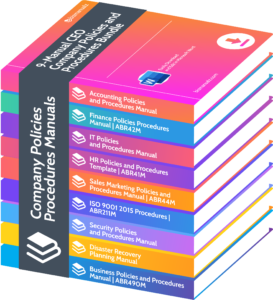COO Insight Achieving Business Process Improvement

Are you looking to improve the overall efficiency and productivity of your business? Look no further. In this article, we will discuss the critical role played by the Chief Operating Officer (COO) in achieving business process improvement. With the increasing demand for streamlined processes and optimized operations, understanding the importance of the COO’s role is crucial for success in today’s competitive market. COO Insight Achieving Business Process Improvement.
What Is Business Process Improvement?
Business process improvement (BPI) is a methodical approach to identifying, analyzing, and improving current business processes in order to optimize performance, meet customer demands, and reach organizational objectives.
Its goal is to streamline operations, eliminate bottlenecks, and increase efficiency. BPI strives to improve productivity, decrease costs, and enhance customer satisfaction through the refinement of processes and workflows.
Why Is Business Process Improvement Important?
Improving business processes is crucial for optimizing efficiency, reducing costs, and enhancing overall productivity. It is vital in streamlining operations, eliminating bottlenecks, and ensuring better customer satisfaction.
By prioritizing business process improvement, organizations can easily adapt to market changes, remain competitive, and foster innovation.
In fact, in the 1990s, Toyota successfully implemented business process improvement methodologies, such as Lean and Six Sigma, revolutionizing the automotive industry with their highly efficient production systems.
What Are The Steps To Achieving Business Process Improvement?
Business process improvement is crucial for companies to stay competitive and efficient in today’s fast-paced market. In this section, we will break down the steps involved in achieving business process improvement.
From identifying the problem and analyzing the current process, to setting goals and objectives and implementing changes, we will provide a comprehensive guide for organizations looking to streamline their operations and achieve success. So let’s dive in and discover the key steps to achieving business process improvement.
1. Identify The Problem
- Collect data to understand the issue thoroughly.
- Engage with relevant stakeholders to gain multiple perspectives.
- Identify the problem clearly using specific and measurable terms.
- Analyze the impact of the problem on business processes and outcomes.
2. Analyze The Current Process
When analyzing the current process, follow these steps:
- Map out the current process flow to understand every step.
- Identify bottlenecks, redundancies, and inefficiencies.
- Analyze data to pinpoint areas for improvement.
Fact: Analyzing the current process is crucial for identifying areas of improvement and ensuring business efficiency.
3. Set Goals And Objectives
When setting goals and objectives for business process improvement, follow these steps:
- Define clear and specific goals aligned with the overall business strategy.
- Evaluate the current state to identify areas that need improvement.
- Establish measurable objectives to track progress and success.
- Communicate the goals and objectives effectively to ensure alignment and commitment across the organization.
Fact: Effective goal setting is crucial for achieving successful business process improvement initiatives.
4. Develop A Plan For Improvement
- Identify areas in need of improvement, such as production delays or communication gaps.
- Involve relevant team members in brainstorming and planning for effective buy-in.
- Utilize data analysis to pinpoint root causes and areas for enhancement.
- Develop a detailed plan for improvement with clear objectives, timelines, and assigned responsibilities.
- Ensure the plan aligns with the overarching business goals and strategies.
Pro-tip: Regularly communicate progress and setbacks to maintain team engagement and commitment to the improvement plan.
5. Implement The Changes
- Evaluate the current process and identify areas for improvement.
- Develop a detailed plan for implementing the necessary changes.
- Communicate the changes effectively to all stakeholders involved.
- Allocate resources and assign responsibilities for carrying out the changes.
- Train employees on any new processes or technologies to ensure successful implementation.
Here’s a real-life scenario: A multinational corporation streamlined its procurement process by implementing a new digital procurement platform, resulting in faster processing times and increased cost savings.
6. Monitor And Evaluate The Results
- Compare the actual results with the expected outcomes outlined in the process improvement plan.
- Utilize key performance indicators (KPIs) to measure the impact on efficiency, cost savings, quality, and customer satisfaction.
- Analyze feedback and data to identify areas where further enhancements are needed.
- Document and communicate the results to stakeholders for transparency and future decision-making.
What Are The Common Challenges In Business Process Improvement?
As a COO, you know that constant improvement is essential for business success. However, achieving business process improvement is not always an easy task. In this section, we will discuss the common challenges that companies face when striving for improvement.
From resistance to change and lack of resources to ineffective communication, we will explore the obstacles that can hinder progress and offer insights on how to overcome them. By understanding these challenges, you can better equip yourself and your team to navigate the path towards successful business process improvement.
1. Resistance To Change
- Lack of Understanding: Employees may not fully grasp the importance of change and may therefore resist it.
- Fear of the Unknown: Resistance often arises from uncertainty about the potential outcomes of proposed changes.
- Comfort with the Status Quo: Some individuals are content with current routines and may be hesitant to embrace disruptions.
2. Lack Of Resources
In the realm of business process improvement, a lack of resources can impede progress. This obstacle often presents itself in the form of inadequate funding, limited staff, and insufficient technology.
To overcome these challenges, it is crucial to prioritize initiatives with the highest impact and to seek out creative solutions, such as cross-training employees or utilizing low-cost automation tools.
A helpful tip is to foster collaboration and creativity within your team, as this can lead to resourceful ways to overcome limitations and drive improvement initiatives.
3. Ineffective Communication
- Lack of clarity: Unclear or vague messaging can result in confusion and misunderstandings, leading to ineffective communication.
- Information overload: Too much information can overwhelm and lead to important details being overlooked, causing communication to be ineffective.
- Wrong channel: Using inappropriate communication channels can hinder the reception and understanding of the message, resulting in ineffective communication.
- Lack of feedback: Without a proper feedback mechanism, it’s challenging to ensure the message was correctly interpreted, making communication ineffective.
At a previous workplace, ineffective communication caused a major project delay due to misinterpreted instructions. As a result, clear and concise communication became a top priority, leading to improved project efficiency.
What Are The Best Practices For Successful Business Process Improvement?
As a COO, it is crucial to constantly strive for business process improvement in order to increase efficiency, reduce costs, and stay ahead of competitors. In this section, we will discuss the best practices for successful business process improvement.
From involving all stakeholders to utilizing data-driven decision making and continuously reviewing and improving processes, we will explore the key strategies for achieving effective and sustainable improvements in any organization.
1. Involve All Stakeholders
- Identify all stakeholders associated with the process.
- Communicate with stakeholders to understand their needs and concerns.
- Involve all stakeholders in the decision-making and implementation process.
- Seek feedback from all stakeholders throughout the improvement process.
To ensure successful business process improvement, it is essential to actively engage and involve all stakeholders. Their insights and cooperation are crucial for achieving sustainable and effective improvements.
2. Use Data-Driven Decision Making
- Gather pertinent information from multiple sources.
- Employ analytics tools to analyze and decipher the data.
- Recognize patterns, trends, and insights within the data.
- Utilize the analyzed data to make informed decisions that drive improvements in business processes.
3. Continuously Review And Improve Processes
- Regular Assessment: Continuously review existing processes to identify inefficiencies and areas for enhancement.
- Feedback Utilization: Act on feedback from stakeholders, employees, and customers to drive process improvements.
- Implement Changes: Continuously incorporate modifications and adjustments to streamline operations and boost productivity.
What Are The Benefits Of Business Process Improvement?
As businesses strive to stay competitive and adapt to ever-changing market conditions, the need for continuous improvement becomes essential. One way to achieve this is through business process improvement (BPI), which involves analyzing and optimizing existing processes to make them more efficient and effective.
In this section, we will discuss the various benefits of BPI, including increased efficiency, cost savings, improved quality, and enhanced customer satisfaction. These benefits highlight the value of implementing BPI strategies in any organization.
1. Increased Efficiency
- Streamline Processes: Identify and eliminate redundant steps or inefficiencies to increase efficiency.
- Automation: Implement technology to reduce manual tasks and accelerate workflows for increased efficiency.
- Training and Development: Invest in staff training to enhance skills and productivity, leading to increased efficiency.
- Performance Metrics: Establish key performance indicators to measure and optimize process effectiveness and increase efficiency.
2. Cost Savings
- Incorporate energy-efficient practices to achieve cost savings on utility expenses.
- Outsource non-core functions to decrease operational costs and save on expenses.
- Invest in automation and technology to streamline processes and minimize labor costs, resulting in cost savings.
- Negotiate favorable terms with suppliers to lower procurement expenses and achieve cost savings.
- Optimize inventory management to minimize carrying costs and reduce waste, resulting in cost savings.
3. Improved Quality
- Incorporate quality control measures to ensure adherence to standards.
- Provide ongoing training to employees to enhance their skills and knowledge.
- Continuously review and update processes to include industry best practices.
Consistently striving for improved quality is crucial for achieving business success. By prioritizing continual improvement, businesses can maintain high standards and ensure customer satisfaction.
4. Enhanced Customer Satisfaction
To achieve enhanced customer satisfaction, businesses can follow these steps:
- Understand customer needs and expectations by gathering feedback and conducting surveys.
- Implement processes to address customer concerns promptly and effectively.
- Provide personalized experiences and tailor products or services to meet specific customer requirements.
- Ensure consistent and open communication to build trust and rapport with customers.
- Regularly review and update processes based on customer feedback and changing needs.
A company successfully implemented a customer feedback system and personalized service, resulting in a significant increase in customer satisfaction and loyalty.
Frequently Asked Questions

What is COO Insight?
COO Insight is a business management strategy that focuses on providing key insights and recommendations for achieving effective and efficient business process improvement.
Why is achieving business process improvement important?
Efficient business processes can lead to improved productivity, cost savings, and overall organizational success. By implementing effective process improvement strategies, companies can optimize their operations and stay competitive in their industries.
What are some common challenges in achieving business process improvement?
Some common challenges include resistance to change, lack of resources or expertise, and difficulty in identifying and prioritizing areas for improvement. It is important to address these challenges and develop a strategic plan to overcome them.
How can COO Insight help achieve business process improvement?
COO Insight provides valuable data analysis and recommendations based on key performance indicators and best practices in process improvement. This can help businesses identify areas for improvement and develop an effective plan to streamline their operations.
What are some examples of successful business process improvement strategies?
Some successful strategies include lean management, Six Sigma, and agile methodology. These approaches focus on eliminating waste, increasing efficiency, and continuously improving processes to meet customer needs and business goals.
How can businesses implement COO Insight?
Businesses can implement COO Insight by consulting with a professional business management firm that specializes in process improvement. Companies can also conduct internal assessments and use data analysis tools to gain valuable insights into their operations.

















Leave a Reply